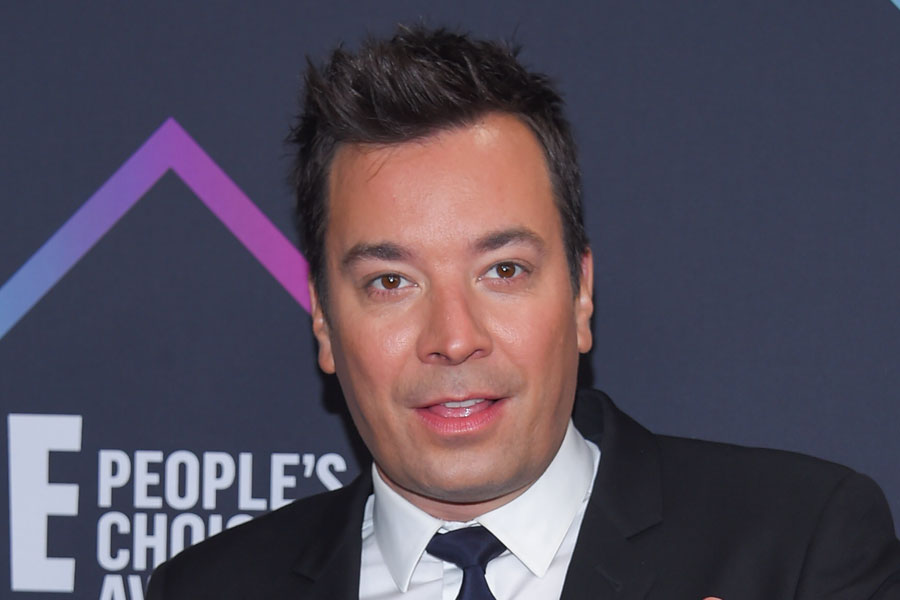Jimmy Fallon Claims Neutral Ground, But Numbers Show a Softer Tilt in a Sharply Divided Late-Night Landscape

NEW YORK, NY – As late-night television becomes increasingly polarized, “The Tonight Show” host Jimmy Fallon is trying to hold the center. While many of his peers have turned their monologues into nightly political commentaries, Fallon continues to describe his show as lighthearted entertainment rather than a partisan soapbox.
Yet, new data tracking political jokes and guest appearances across late-night programs suggests the picture is more nuanced. Fallon’s show may avoid the overt political combat seen on “The Late Show with Stephen Colbert” or “Jimmy Kimmel Live!,” but the numbers show a consistent-if smaller-tilt toward mocking the political right.
Since taking over “The Tonight Show” in 2014, Fallon has positioned himself as a mainstream entertainer first and a commentator second. His formula-celebrity sketches, musical impressions, and viral games-helped broaden the show’s appeal during its early years. But in the politically charged media climate of the last decade, that neutrality has become harder to sustain.
Viewership for network talk shows has steadily declined, and hosts have sought ways to stay relevant by joining the political conversation. Many have found success leaning into it: Colbert, for instance, became the top-rated host during the Trump era by speaking directly to liberal audiences. Fallon, by contrast, has resisted that transformation, insisting his job is “to make people laugh, not take sides.” Still, according to recent tallies by media-content analysts, even Fallon’s version of neutrality carries its own lean.
Jimmy Fallon, Ariana Grande and Megan Thee Stallion,- Dec.6, 2021 (It was a Masked Christmas…We’ll be in line for a booster”
And lets not forget in late 2021, Fallon released his “It Was a … (Masked Christmas)” “propegaanda video” with pop stars Ariana Grande and Megan Thee Stallion – a glossy, comedy-music video openly promoting mask-wearing and booster shots during the pandemic. The skit-turned-song arrived just as the federal government launched its $1.5 billion vaccine-confidence public-relations campaign, which enlisted media outlets and celebrities to normalize vaccination messaging. Fallon’s participation was widely viewed as another example of mainstream entertainment aligning with lefty administration-backed narratives – blurring the line between comedy, culture, and coordinated messaging.
What the Data Shows
| Show (2024) | % of Jokes Aimed Right | 2025 Political Guests (Left/Right) |
|---|---|---|
| Tonight Show (Starring Jimmy Fallon) | 70 % | 5 / 0 |
| Late Show (Stephen Colbert) | 82 % | 43 / 0 |
| Late Night (Seth Meyers) | 85 % | 16 / 0 |
| The Daily Show | 75 % | 32 / 1 |
| Jimmy Kimmel Live! | 92 % | 10 / 0 |
Sources: Media Research Center / NewsBusters (H1 2025 guest-list audit); compiled public episode logs.
Fallon’s insistence that he “hits both sides equally” may not be perfectly supported by the data, but his ratio is closer to balance than his competitors – and his guest mix remains by far the least political.
Whether that restraint proves an advantage or a liability in an era of ideological media branding remains to be seen. For now, Jimmy Fallon appears to be threading a shrinking needle: staying relevant in political times without becoming another nightly voice in the partisan chorus.
Key Facts & Details
| Category | Detail |
|---|---|
| Show | The Tonight Show Starring Jimmy Fallon |
| Network | NBC |
| Years Analyzed | 2023 – 2025 |
| % Political Jokes Targeting Right | ≈ 70 % |
| Political Guests (H1 2025) | 5 Left / 0 Right / 0 Politicians |
| Comparative Trend | Peers range 80–92 % right-targeted; Fallon least partisan overall |
| Industry Context | Late-night ad revenue down ≈ 50 % since 2017 |
| Analyst Take | Fallon balances mass-appeal entertainment with light political humor |
What to Watch Next
With The Tonight Show entering the 2025–26 season amid tightening competition and shrinking ad dollars, Jimmy Fallon’s balancing act may soon be tested. NBC faces decisions about how to position late night in a polarized streaming era – whether to lean into political commentary, as rivals have done, or continue banking on broad entertainment appeal.
If viewership trends hold, Fallon could benefit from fatigue among audiences seeking an escape from politics. Yet if the cultural conversation remains dominated by partisanship and election-year news, neutrality may be a harder sell. Either way, the numbers show Fallon is walking a careful line – one that could determine not only his long-term ratings but the future tone of late-night comedy itself.
Editor’s note: Comparative data before 2023 are inconsistent across sources. This analysis focuses on 2023–2025, the first continuous two-year span with standardized monitoring across major late-night programs.


